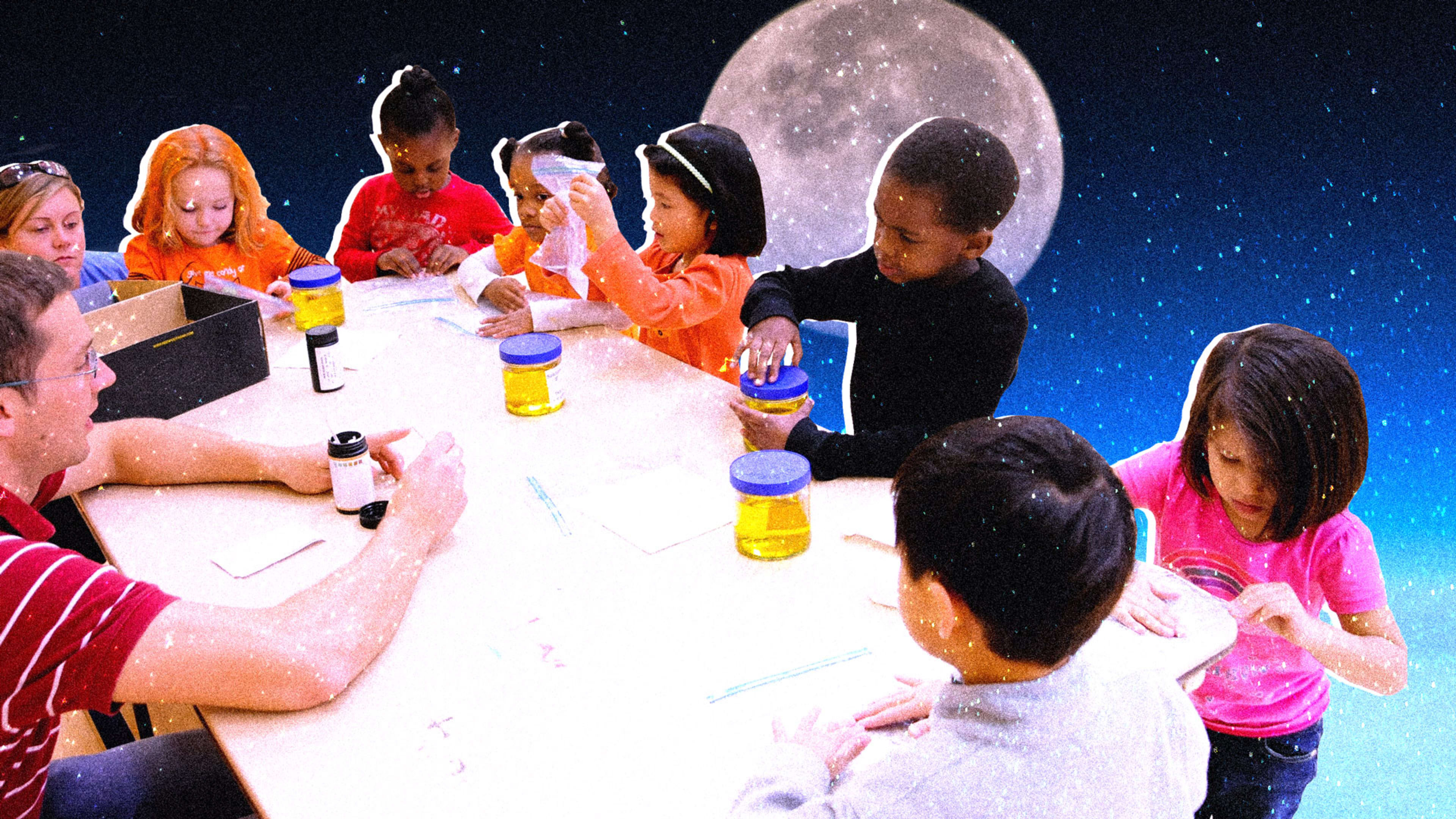On July 20, 1969, the world watched in wonder as Neil Armstrong became the first man to set foot on the moon. It was the result of years of work and ingenuity on the part of scientists, engineers, computer programmers, mathematicians, and astronauts. In photographs taken at NASA’s Mission Control Center on that historic day, you see people cheering, American flags waving.
But you won’t see diversity. Where are the women? Where are the people of color? Where are the “hidden figures”? If you look at the pictures, you’d think that only one race and one gender orchestrated the moon landing, but that’s not true. The movie Hidden Figures showed the world what many people already knew: talent is everywhere, but opportunity isn’t.
Diversity in STEM starts in the classroom
We now know that women and people of color made significant contributions to the Apollo 11 mission. Margaret Hamilton, the lead flight software designer, led the team that wrote the code for the Apollo command module computer—and, in the process, invented many of the core ideas of modern computing. Katherine Johnson, a NASA “computer” (mathematician) and one of the hidden figures made famous by the book and film, helped calculate the trajectory for the Apollo 11 mission. But it’s only recently that these women have gotten the credit and public recognition they deserve.
As a society, we can do better. Fifty years have passed since Neil Armstrong took “one small step for man, one giant leap for mankind,” and only 26% of U.S. workers in the fields of math and computer sciences are women, according to a 2018 National Science Board report. A 2017 National Science Foundation report indicates that just 12% of employed scientists and engineers in the U.S. are women of color. This data suggests that if we were to take photos today in NASA’s Mission Control Center, they won’t look much different from what we saw in 1969.
To change the demographics of the STEM workforce, we need to change the demographics of the STEM classroom. We’re not recognizing (and supporting) many “hidden figures” with STEM talent. I saw this firsthand when I was tutoring low-income kids in Harlem years ago. My students in Harlem were every bit as intelligent, curious, and capable as kids at top-tier schools. However, they didn’t have access to the tools and resources that their more privileged counterparts had been leveraging their entire lives.
Our shared future depends on ensuring every child—regardless of their gender, race, or ZIP code—receives a quality education to enable them to tackle some of the world’s most significant challenges. Many of these issues disproportionately impact communities of color, and the solutions rely on STEM. If we don’t have women and minorities weighing in on issues like toxic chemical dumps and climate change (to name a few), we’ll probably see those in power make decisions that fail to consider diverse perspectives.
Why mathematical education is important
To expand the opportunities in STEM, we need to start with improving mathematical education. We don’t know what the next moonshot will be, but we do know that math will be involved. Frankly, math is essential to every profession, yet many students struggle more in math than in any other subject. And this has very little to do with their abilities; it’s more about the way we teach math.
We need to challenge every student to think deeply about math. All learning guardians—teachers, parents, and administrators—also need to recognize that encouraging students to persist can help them through challenges to their proficiency. We need to develop students’ confidence as well as their competence in math. This requires us to question whether we’re creating learning environments and experiences that give students the math instruction they need to feel prepared to enter the workforce. It’s not about teaching them to survive the next century or even merely to thrive in it. We need to prepare them to drive innovation so they can solve the world’s problems.
On using technology to level the playing field
New educational tools, such as intelligent adaptive learning technology, have the power to level the playing field for students and instill in all children a love of math that opens up a variety of STEM careers. The traditional model of teaching students with a one-size-fits-all method might have gotten us to the moon the first time. But today, the world faces many complex issues that require us to transform the way kids learn.
One of the reasons why I’m excited to come to work every day at DreamBox Learning is because I believe in empowering students with a personalized learning experience that meets their unique needs. It’s not in our interests to see some students advance while others fall behind. We need to create a learning experience that allows all students to progress at their own rate, not anyone else’s, if we want to encourage children to develop a love and understanding of math.
As we celebrate the 50th anniversary of the Apollo moon landing and look forward to the next 50 years of technological innovation, we need to ask ourselves: Are we doing enough to ensure the future is brighter for everyone? Are we teaching children to learn and love math? Are we cultivating a more diverse STEM workforce? Judging by the statistics on women and minorities in STEM, the answer is: not yet. That’s why it’s on us to use every tool available to get more children interested in STEM from an early age, so that we can unlock a more diverse, inclusive, and successful future for everyone.
Jessie Woolley-Wilson is the CEO and president of DreamBox Learning.
Recognize your brand’s excellence by applying to this year’s Brands That Matter Awards before the early-rate deadline, May 3.
